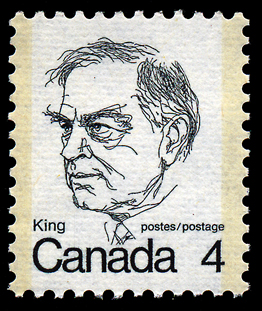
|
Elizabethan II Study Group Journal: The Corgi Times Glossary |
R | |||||||||||||||||||||||||||||
| Receiving mark - a postmark or other postal marking applied by the receiving, rather than the originating post office. | |||||||||||||||||||||||||||||
| Recess printing - strictly speaking, any process where the inked image is below the plane surface of the plate, block, or cylinder; but in modern philatelic parlance refers to the present-day machine-printed, photo-mechanically engraved plate method of reproduction, which in its essentials is similar to line-engraving by which most of the first and early stamps were printed. A 'recess' printed stamp has a distinct raised image which can be felt by passing a fingernail gently over the surface. | |||||||||||||||||||||||||||||
| Reconstructed sheet - see Plating. | |||||||||||||||||||||||||||||
| Re-cut - when a die or plate has been extensively retouched it is normally termed as re-cut, or re-engraved. | |||||||||||||||||||||||||||||
| Re-drawn - a stamp design that has been repeated in most of its main essentials, and still retains all the salient characteristics of its 'type', but betrays its having been re-drawn by minor variations from the original. | |||||||||||||||||||||||||||||
| Re-engraved - a stamp with an altered design made by changing a transfer roll from an original die. | |||||||||||||||||||||||||||||
| Re-entry - duplication of part of a stamp design due to a first impression having been inadequately erased, and thus enabling traces of its 'entry' to appear in conjunction with the new impression, causing a doubling of a part of the image. | |||||||||||||||||||||||||||||
| Registered mail - first-class mail with a numbered receipt, including a valuation of the registered item, for full or limited compensation if the mail is lost. | |||||||||||||||||||||||||||||
| Repaired stamp - a damaged stamp that has been repaired in some way to reinforce it or to make it resemble an undamaged stamp. | |||||||||||||||||||||||||||||
| Reprints - stamps printed from the plates after official issues have ceased, for official files, as philatelic curiosities, as official souvenirs, or for sale to meet collector demand. There is a confusion modern tendency to apply the name to fresh printings of current stamps from existing plates to renew stocks. | |||||||||||||||||||||||||||||
| Retouch - minor handwork made to a cliché, plate, or die to repair accidental damage or wear. | |||||||||||||||||||||||||||||
| Revenues - stamps representing the prepayment or payment of various taxes. Revenues are affixed to official documents and to merchandise. | |||||||||||||||||||||||||||||
| Rocking-in - the action whereby the image of the transfer roller is transferred to the printing plate. | |||||||||||||||||||||||||||||
| Ribbed
- paper with an uneven, corrugated surface, rather
like exaggerated laid lines, but caused by passing
the paper between ridged rollers. Viewing the stamp at an angle towards a light source will cause shadows to appear along the ribbing. The illustration to the right has been digitally enhanced to show off the horizontal ribbing. Some stamps, notably a few in the Wilding series, come either horizontal or vertical ribbed. Some ribbing may only show on one side of the stamp. |
 Ribbed paper |
||||||||||||||||||||||||||||
| Rolland -
a manufacturer of paper used on Elizabethan-era
stamps. First seen in August 1985. The gum is white with a slight curl.. |
 Inscription showing 'R' for Rolland paper |
||||||||||||||||||||||||||||
| Roller cancel - hand-applied cancellation in a roller fashion. The town/city and province are usually placed in the middle of several horizontal lines; a date is not generally used. Primarily used on parcels or odd-shaped packages. |
 Roller cancel |
||||||||||||||||||||||||||||
| Rolls of stamps - see Coils. |
 Coil (roll) |
||||||||||||||||||||||||||||
| Rouletting - a method of piercing the paper between stamps, usually in the form of a series of slits, to facilitate separation. An alternative to perforation, it was originally performed by a toothed wheel cutter; hence the name. An important difference between rouletting and perforation proper is that in rouletting no paper is actually removed. | |||||||||||||||||||||||||||||
| Royal Philatelic Society, London - formerly the Philatelic Society, London, founded in 1869. In 1893 King George V, then Prince of Wales, became Hon. Vide-president, and in 1896 its President. It was granted the privileged prefix 'Royal' by command of King Edward VII in 1906. | |||||||||||||||||||||||||||||
| R.P.S.C. - Royal Philatelic Society of Canada. | |||||||||||||||||||||||||||||
| R.P.S.L. - Royal Philatelic Society, London | |||||||||||||||||||||||||||||
|
© 2001-2017, 2018 Website design by: Adminware Corporation. For information or questions regarding this website, please contact Robin Harris |